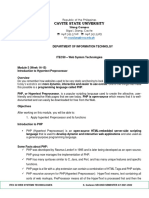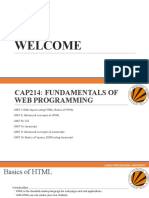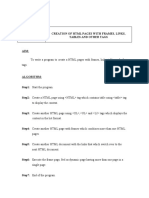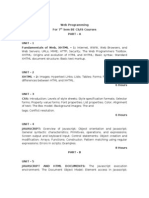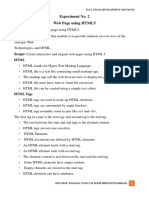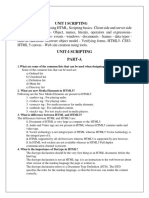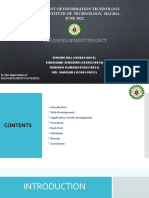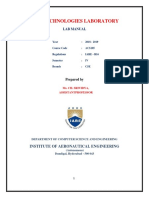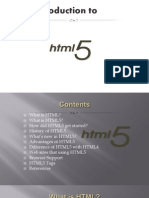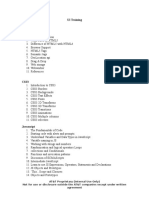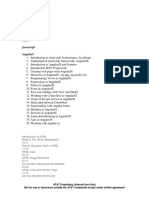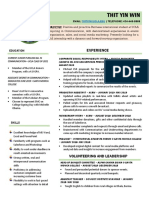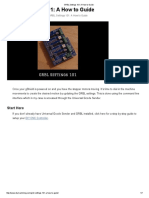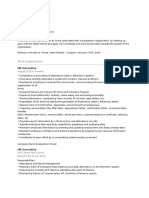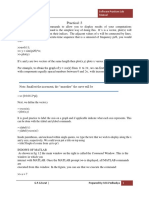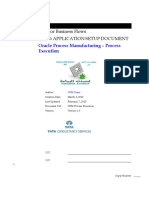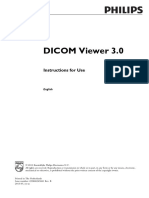0% found this document useful (0 votes)
343 views24 pagesHTML 5
HTML5 is the latest evolution of the standard Hypertext Markup Language (HTML) that defines the structure and layout of web pages. It introduces new semantic elements, removes deprecated elements, and expands the types of content that can be embedded within HTML pages. Some key new features in HTML5 include new semantic elements (<header>, <nav>, <article> etc.), multimedia integration using <video> and <audio> tags, canvas drawing, and offline web applications. While browser support for HTML5 is still evolving, all major browsers have implemented many new features, though full compatibility has not been achieved.
Uploaded by
Ruth AbiyaCopyright
© © All Rights Reserved
We take content rights seriously. If you suspect this is your content, claim it here.
Available Formats
Download as PPT, PDF, TXT or read online on Scribd
0% found this document useful (0 votes)
343 views24 pagesHTML 5
HTML5 is the latest evolution of the standard Hypertext Markup Language (HTML) that defines the structure and layout of web pages. It introduces new semantic elements, removes deprecated elements, and expands the types of content that can be embedded within HTML pages. Some key new features in HTML5 include new semantic elements (<header>, <nav>, <article> etc.), multimedia integration using <video> and <audio> tags, canvas drawing, and offline web applications. While browser support for HTML5 is still evolving, all major browsers have implemented many new features, though full compatibility has not been achieved.
Uploaded by
Ruth AbiyaCopyright
© © All Rights Reserved
We take content rights seriously. If you suspect this is your content, claim it here.
Available Formats
Download as PPT, PDF, TXT or read online on Scribd
/ 24

